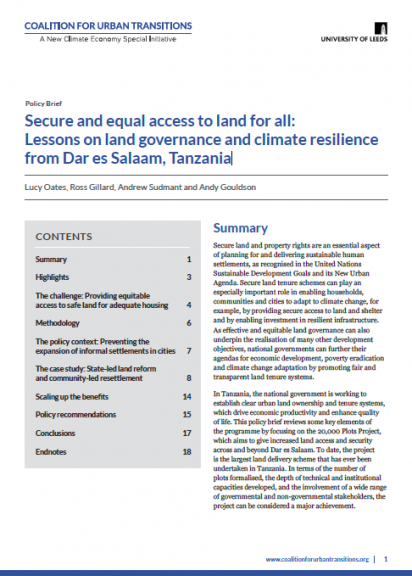Secure and equal access to land for all: Lessons on land governance and climate resilience from Dar es Salaam, Tanzania
Secure land and property rights are essential for improving the livelihoods of the poor and ending poverty. Effective and equitable land governance can also contribute to economic development, domestic resource mobilisation and climate change resilience. Promoting fair and transparent land tenure systems should therefore be a priority for national governments.












